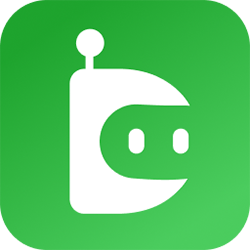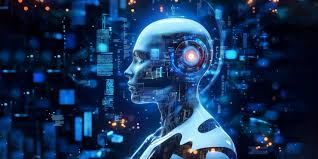Over the past decade, artificial intelligence has evolved from the world of science fiction to the very heart of ordinary life. From personal assistants and driverless cars to robotic medical assistants, AI is changing all aspects of modern life — and most captivatingly, the creative industries. Digital creativity, previously thought to be the exclusive domain of human imagination, is more and more being reshaped by intelligent systems that can learn, adapt, and even create in ways that exceed human capacity.
Through 2025, we are at a pivot in the manner that creative content is being generated, consumed, and customized. Let’s jump into how AI not only complements digital tools but is rewriting what it means to be a “creator” within the digital environment.
The Evolution of Creative Tools
Creativity has always relied on tools — paintbrushes, Photoshop, and so on. What’s unique about this moment in time is that our tools are beginning to think. Cutting-edge neural networks and machine learning algorithms can now do dull design work for us, suggest edits, or generate full drafts from prompts. These AI-powered tools free creators from technical constraints so they can focus on vision and narrative.
Take mobile phones as a case in point. New Android smartphones with high-performance chips are now capable of running AI-driven editing software that analyzes an image and optimizes it with very little intervention from a human user. Platforms like DroidKit.org have gone a long way in showcasing how such technology can be used to great effect on Android platforms, facilitating premium-level content creation more than ever before.
The Rise of Generative Design
One of the most crucial breakthroughs is generative design. Whether it’s text, video, or pictures, AI models like diffusion networks and large language models can create content from scratch. Such co-creating is on the rise in fields like graphic design, advertising, and even architecture.
But even maybe one of the most fascinating and controversial breakthroughs is in AI music.
AI Music: From Fad to Industry Standard
Only a few years ago, the prospect of a computer writing a chart-topping hit was unimaginable. Yet through the rapid advances in deep learning and audio synthesis, AI-generated music is moving into the mainstream. From scoring background music for independent games to driving full albums, AI music is altering our perception of composition.
These systems can analyze thousands of songs to master styles, chord progressions, emotional content, and rhythms. The reward? Compositions that are identical — and typically superior in terms of consistency — to those written by humans.
For artists, this is a lifesaver. Need royalty-free music for a YouTube video or a mobile game? AI can produce it in seconds, tailored to mood, genre, and tempo. Musicians also appreciate it, using AI as a co-creator to come up with ideas or create layered backing.
Still, the advent of AI music along with it, there are concerns about authorship, creativity, and the fate of the music industry — challenges that will gain momentum in the coming years.
Personalized Content Like Never Before
AI doesn’t just make — it tailors. With user information (ethically sourced, we hope) at their fingertips, AI applications can tailor experiences to personal preferences in real-time. This is particularly powerful in mobile contexts, where content, interfaces, and even music playlists can adapt dynamically based on user activity.
Imagine opening a meditation mobile application which not only plays calming sounds, but also transforms the visual color and voice depending on your degree of stress, as well as the time of day. Experiences such as these hyper-personalized experiences are already beginning to roll out throughout Android apps, rewriting the meaning of what “user-friendly” truly means.
AI Paragraph Generator:
Another application of artificial intelligence is to writing. You can use a prompt on a tool like Canva’s Magic Write, and it’ll turn your prompt into a detailed draft that you can use. You can also use prompts to brainstorm ideas, ask for suggestions, or even summarize a long paragraph into a shorter version. You see, AI is already enhancing everything we do in the digital space, and it’s not going to stop here or anytime soon. It’ll continue to help improve our creativity in ways you can ever imagine.
Challenges and Ethical Frontiers
While the potential is vast, AI-generated creativity also poses enormous challenges. Who owns AI-generated art or music? What happens to human designers and artists? How do we reconcile ethical use, avoid deepfakes, and ensure cultural authenticity?
These are not abstract questions — they have real legal, social, and economic implications. Governments, technology platforms, and societies must come together and establish frameworks that enable innovation to flourish and human dignity to be upheld.
Final Thoughts
AI is not killing creativity — it’s revolutionizing it. Whether by computer editing, intelligent design software, or AI-generated music tracks, computer intelligence is extending the boundaries of what is possible. For Android users and digital artists, this revolution brings unparalleled capability to create, design, and inspire.
Sites like DroidKit.org are at the forefront of this movement, empowering individuals to understand, make use of, and benefit from these phenomenally powerful new resources. Ahead, one thing is for sure: under the control of machines and humans, creativity is moving toward a whole new level of adventurousness.

